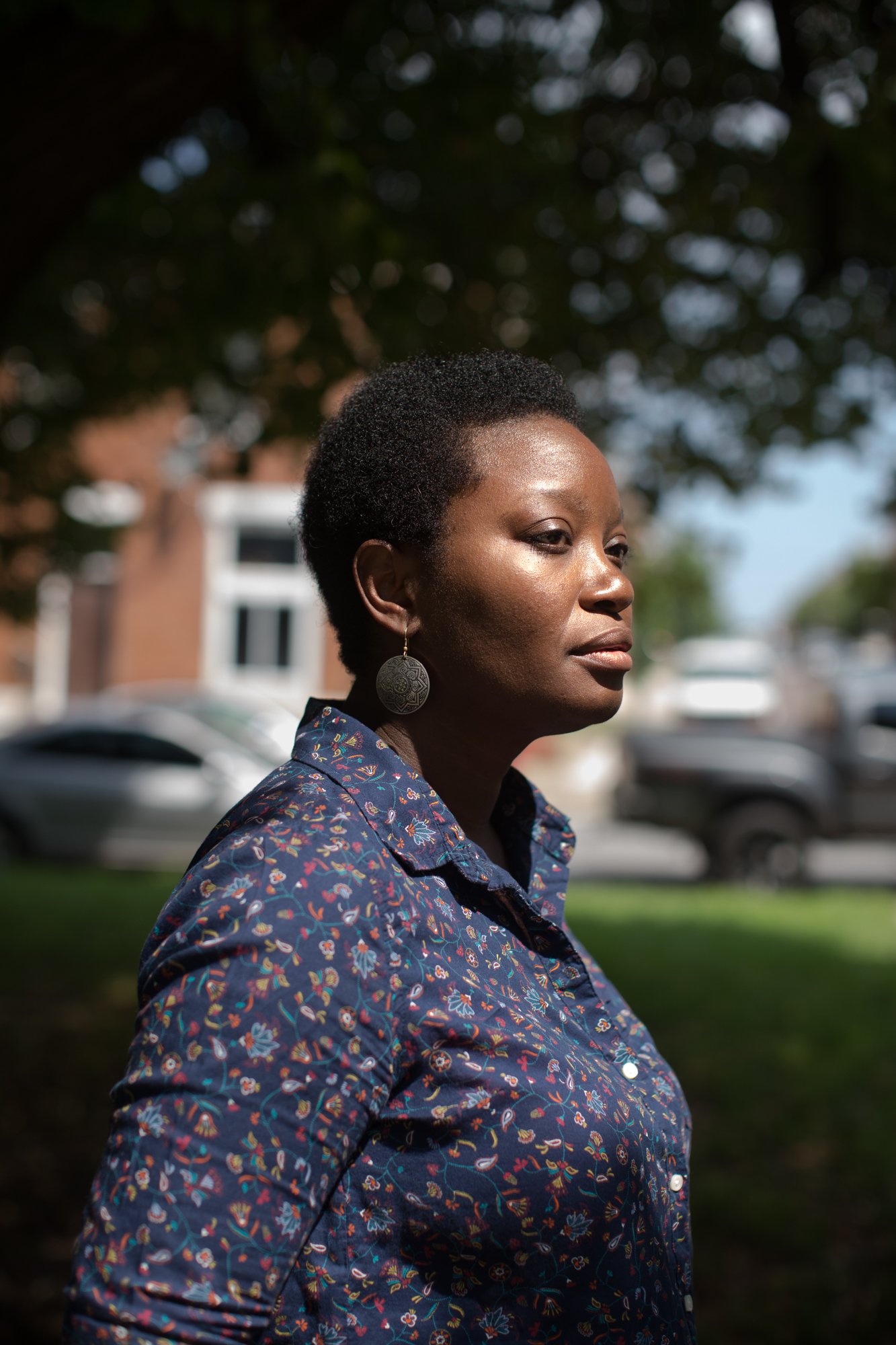
Devan Southerland and her son, Liam, stroll through the historic Bolton Hill neighborhood in Baltimore, where Southerland wants to buy a home.

A recent study found that a large wealth gap continues to exist in Baltimore. Experts say it was exacerbated by the city's practice of redlining where neighborhoods were systematically devalued based on race.

Southerland is studying for a master's degree and currently works as a legal assistant. She wants to purchase a home in Baltimore City, where she was born and raised.

Southerland and her son visit an open house in their neighborhood.

An open house advertises in Southerland's neighborhood of McElderry Park in Baltimore. A recent study found that a large wealth gap continues to exist in Baltimore.

Southerland says she dreams about buying a home in the tree-lined Bolton Hill neighborhood, where it's quiet and culturally diverse.
the gap between black and white home ownership
Devan Southerland wants to buy a home in Baltimore, where she was born and raised. Her dream: to live in the culturally diverse and tree-lined neighborhood of Bolton Hill. Home there go for about $380,000. At 39, Southerland is raising her 10 year-old son, studying for a master's degree and currently makes around $25,000 a year as a legal assistant. She’s juggling a lot. "Oh, I feel like I should have more by now, like I've got to step it up. This is crazy, why am I not further?" she says.
A recent study found that a large wealth gap continues to exist in Baltimore. The issue is partly due to the dwindling supply of housing in the city — a problem experienced across cities in the U.S. But experts say Baltimore’s issues were exacerbated by the city's historic practice of redlining where neighborhoods were systematically devalued and loan applicants were denied based on race.
According to the Urban Institute, White, Asian, and Hispanic homeownership rates have risen over the past 40 years but Black homeownership is roughly the same as it was in the ‘80s.
Read the full story on NPR.org here.